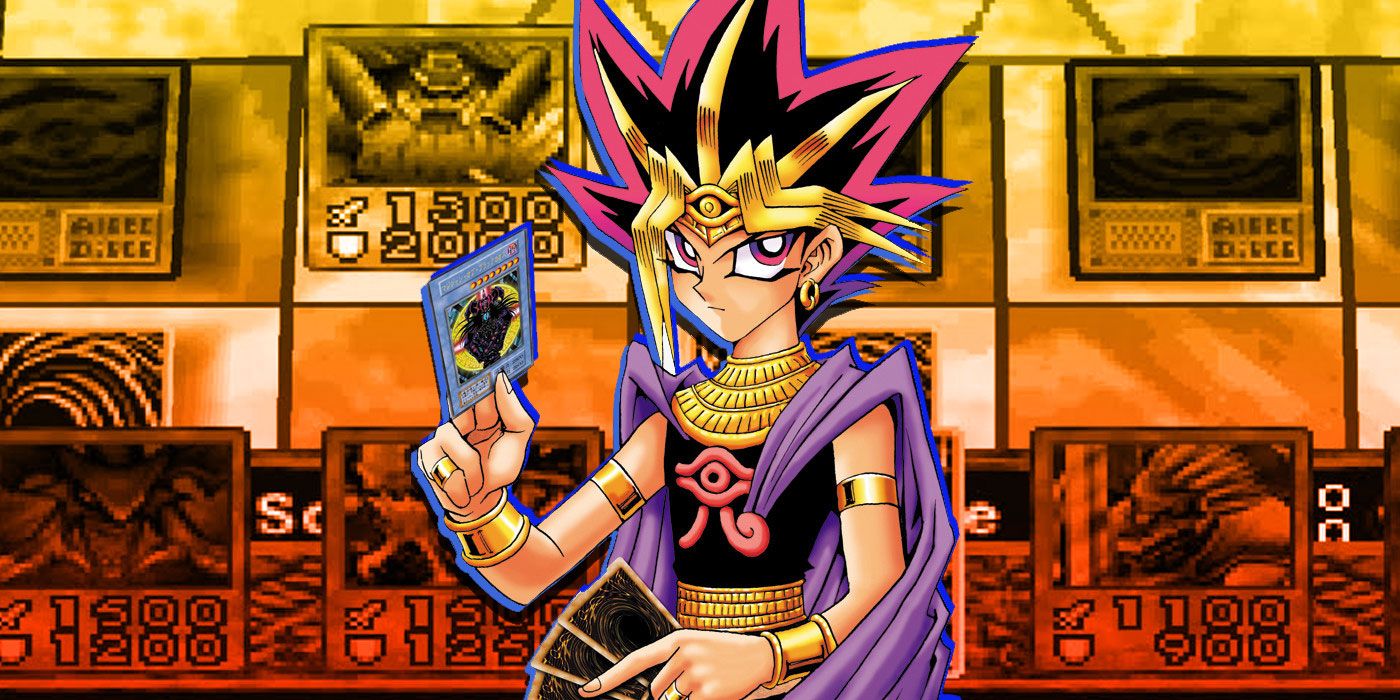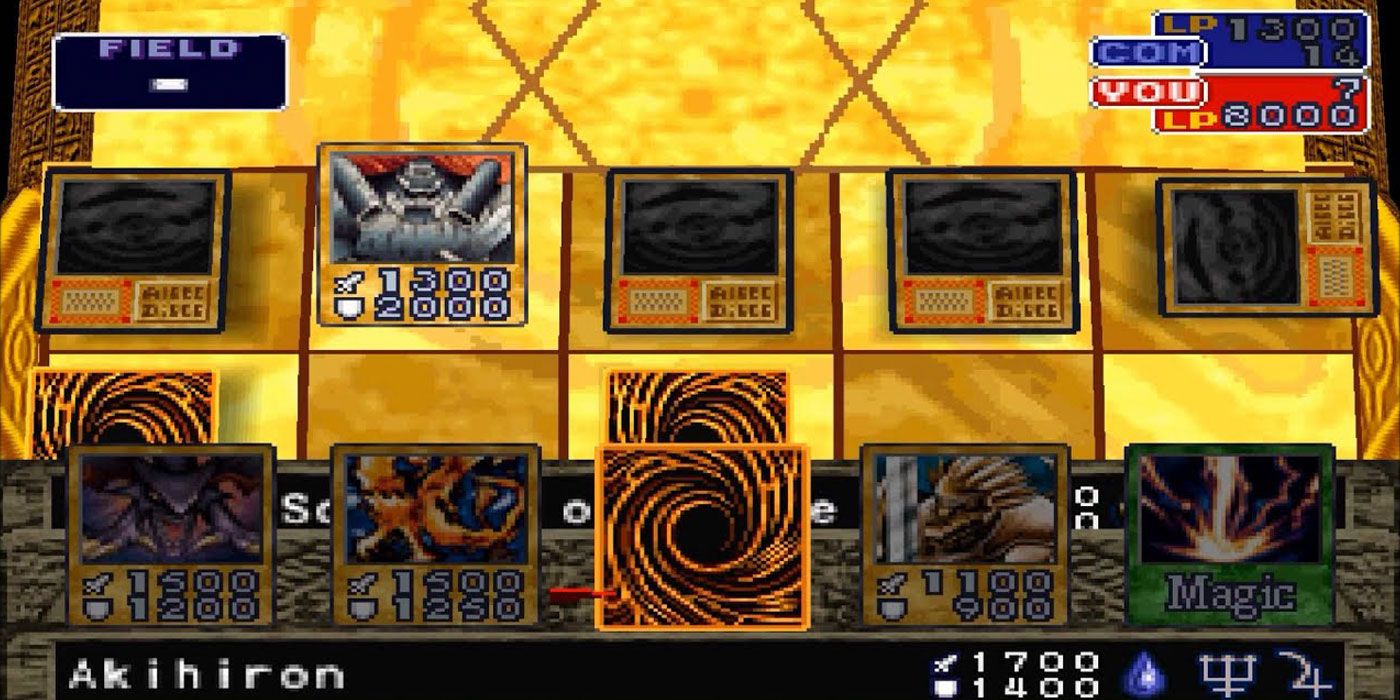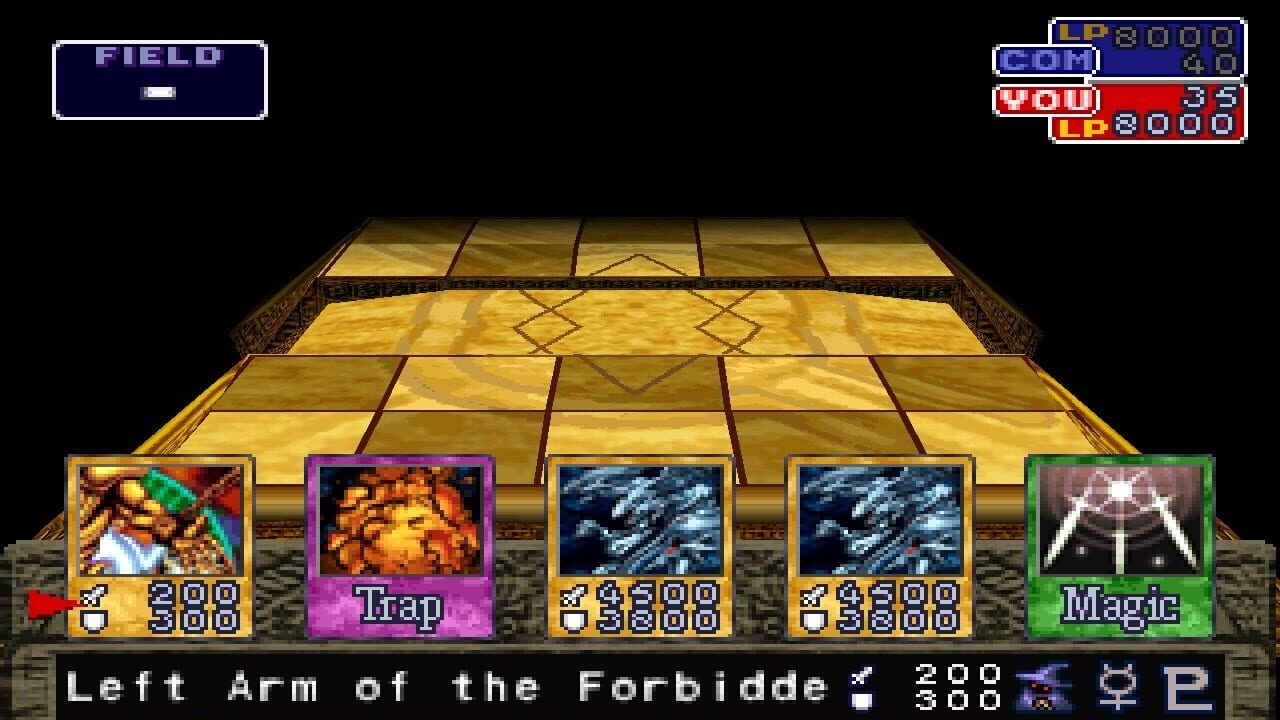For a time in the '90s, the Yu-Gi-Oh! trading card game and associated anime rivaled even the likes of Pokémon. Though it didn't have Pokémon's staying power, the TCG is still considered one of the most popular in the world. Today, many modern fans will likely have discovered the series long after the original anime concluded, but the TCG is a different beast from those early days.
The TCG has always been something of an odd part Yu-Gi-Oh's run, as it came after the anime. Before an official ruleset was established, an original Bandai TCG was released to coincide with the original anime run. When the anime took the form fans know today, a new ruling system was formed that has been in use ever since. However, one game, Yu-Gi-Oh! Forbidden Memories, utilized its own unique rules and gameplay during this transitional period and was one of the first Yu-Gi-Oh! games to release outside Japan.
Forbidden Memories is loosely based on the anime but follows the beat of its own drum. Players take on the role of the Pharaoh in ancient Egypt, where the high mage Heishin betrays the Pharaoh and attempts to use the Millenium Items to conquer the world. The Pharaoh ends up sealed in the puzzle, leading to a modern-day tournament featuring iconic anime characters before the plot returns to ancient Egypt to defeat Heishin and his minions. This focus on ancient Egypt already sets the game apart from other releases, it wouldn't be until the anime's fifth season that fans would get any elaboration on the past of the Millenium Items and Duel Monsters as a whole. The game features many original characters and plot points that would either never be seen again, or only re-appear in Game Boy games released in the same time period.
What makes Forbidden Memories stand out the most is its unique ruleset. In the game, players must draw to five cards at the start of every turn and must play a card in order to progress to the end of a turn. Monsters have no effects and require no tributes to summon. Stronger monsters, spells and traps can be created by fusing cards together in the hand. Any card can be fused at any point (although whether or not they will yield a new card is not guaranteed).
Fusions exist in the game, but they're basic and universal, such as the combination of a Dragon and a Thunder yielding Thunder Dragon or Twin-Headed Thunder Dragon depending on the ATK of the fused monsters. Others are very specific; for example, a Fiend monster and Job-Change Mirror create Summoned Skull. This utterly unique gameplay style necessitates learning fusions to advance, especially in the early stages where a player's deck will be made up almost entirely of level three and lower monsters.
Monsters in Forbidden Memories each have two available Guardian Stars, one of which must be selected when it is summoned. These Guardian Stars act like types do in Pokémon. Each sign has advantages and disadvantages, resulting in either a 500 point increase or decrease to stats when battling monsters with relevant signs.
The game's not easy, though. In almost every setting, a loss results in a game over, kicking players back to the title screen. After a victory, players are graded on their performance and rewarded a single card from a set pool exclusive to an individual opponent. Players must grind against specific opponents in the Free Duel mode after defeating them once in the Story Mode in order to improve their decks sufficiently.
Even today, a little over twenty years since its release, Forbidden Memories is still discussed among fans. Large-scale fan projects to add new cards and opponents to the game are fairly commonplace, and now-lapsed players of the TCG still dabble in this lost title. While far from perfect, this game is unlike anything else the franchise has produced before or since. Forbidden Memories is a completely unique experience that acts as a sort of time capsule to the 90s. It is fascinating to see what Yu-Gi-Oh! could have potentially become when it was still in its infancy and very little about it was set in stone. While many modern fans of the TCG may recoil at the concept of this strange, forgotten title, it is well worth a look. Even non-Yu-Gi-Oh! fans may well find something to love in its unique formula.



